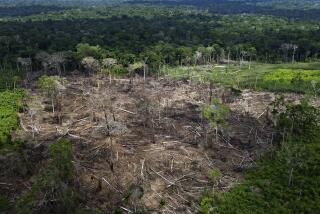Mosses lose their sex drive on islands
Moving to an island may not be good for your libido — if you’re a moss, new research shows. While humans may react differently to that balmy island air, mosses that get to remote islands tend to lose their ability to reproduce sexually.
Mosses, along with liverworts and hornworts, form a group of plants called bryophytes, with more than 16,000 species known worldwide. Their bizarre life cycle and sliding sexuality make them ideal for studying evolution.
Bryophytes can be unisexual (with separate male and female plants) or bisexual (a plant has both male and female parts). They can even be a mix of both.
To reproduce sexually, these plants release sperm that swim through a film of water to reach the eggs. Once fertilized, the eggs develop into small stalks that produce spores, which fall to the ground and grow into a carpet of moist, lush greenery.
But that’s not all. As a backup, many bryophytes can also reproduce asexually, in which small leaflets or branchlets break off and form a new plant, much like sticking a cutting in the ground.
Jairo Patiño, an evolutionary biologist at the University of Liège in Belgium, was curious how bryophyte sexuality might change once they got to oceanic islands, where things tend to get weird.
Marooned from their mainland ancestors and exposed to an entirely new environment, organisms often experience “island syndrome.” Some species become giants (think Galapagos tortoises), while others become dwarves (hobbits from Flores) and still others lose the ability to disperse (like flightless stick insects on Ball’s Pyramid). Patiño wondered whether the plants would show their own form of island syndrome, with fewer spores and more asexual parts, reflecting a move away from sexual reproduction.
Despite the prevalence of island syndrome, there was reason to think these mosses would buck the trend. Bryophytes are so good at dispersing (it doesn’t take much wind to carry a tiny spore) that perhaps island populations would never be sufficiently cut off from their mainland ancestors for evolution to kick in.
“We didn’t think we would find the signal of island syndrome,” Patiño said.
To find out, Patiño and his colleagues combed through lists and descriptions of bryophytes from 63 different island and mainland locations, noting the reproductive traits of each species. They found several species that occurred on both islands and the mainland, enabling them to check for evolutionary shifts within species.
The results, published online last month in the Journal of Ecology, revealed several trends.
For one, about half of species on islands were bisexual, compared with only one-third from contintental areas. The discrepancy could be explained by the higher likelihood of establishing on a remote island if you have both genders on the same plant, rather than needing a male and a female.
The real surprise to Patiño was that for those species found on both islands and the mainland, the island populations demonstrated a shift toward asexuality, demonstrating that bryophytes are not immune to island syndrome.
Why the shift toward asexuality? Perhaps it’s easier and more efficient to reproduce this way, Patiño said. Once arriving on an island, it would be much easier to establish a permanent population if all you had to do was stick a leaflet in the ground.
But not all bryophytes have lost their mojo. In a related analysis of four species that occur on both islands and the mainland, the researchers found that the density of fertile shoots was higher in island populations.
Island syndrome may be common, but some species still retain their ability to disperse and colonize other places. They are not evolutionary dead-ends, as others have suggested, Patiño said.
Return to Science Now.
Follow on Twitter: @BradBalukjian






